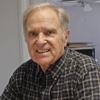Francis hope note: imagery
I was struck by the way Pope Francis today greeted members of the diplomatic corps accredited to the Vatican. He welcomed them saying that it is through them that he encounter(s) your peoples, and thus, in a sense, "I can reach out to every one of your fellow citizens, with their joys, their troubles, their expectations, their desires.”
What jumped out at me was the similarity between his words and those in the opening sentence of the Pastoral Constitution on the Church in the Modern World, that most important Vatican II document, which began: “The joys and the hopes, the griefs and the anxieties of the men (and women) of this age, especially those who are poor or in any way afflicted, these are the joys and hopes, the griefs and anxieties of the followers of Christ.”
I don’t think this was accidental.
The priestly formation of Jorge Mario Bergoglio, now Pope Francis, occurred during Vatican II. He is the first pope to have been ordained a priest after the council. Bergoglio was ordained a Jesuit in 1969.
Francis has told us the focus of our church must be on the poor and marginalized, or, in the words of the pastoral constitution, “those who are poor or in any way afflicted.”
The council unleashed enormous fresh spirit and energy throughout the church and beyond. It was the “fresh air” of which Pope John XXIII spoke when he announced the council to begin with.
That seemingly unbridled energy, in broad strokes, lasted for some 15 years until the pontificate of Pope John Paul II when reaction to that movement of spirit began to take hold. John Paul employed the words of the council, but his pontificate revealed growing efforts to dampen council energy and expectation. He feared, as Pope Benedict, his successor feared, that the council energy, or, as sometimes said, “the spirit of Vatican II,” had gotten out of control.
For the last 35 years, then, we have witnessed, in one way or another, reaction to the actions unleashed by the council. One would now need to be over the age of 50 to have a living memory of those spirit-inspiring, energetic post-conciliar years.
Fifty years after the council, the cardinals met to elect a new pope.
We waited to learn if the momentum of the last 35 years would continue, even as we were picking up signals that serious change of direction in church management was needed.
It appears that we have now entered into a new era. It is the era of reaction to the reaction to the actions unleashed by the council.
Where do we go from here?
It is too early to know precisely.
However, early indications are that we are moving into an era of collegiality, into an era of a more inclusive model of church. Collegiality, greater shared decision-making, was one of the primary goals of Vatican II.
Many questions await us. The need for women to be decision-makers in the church is much more pressing than it was 50 years ago, if we are to go forward in health.
For now, what lifts my spirit is to see Francis, not only using Vatican II words, but modeling those words.
Vatican II was a spring board. Maybe we’ll fly again.




